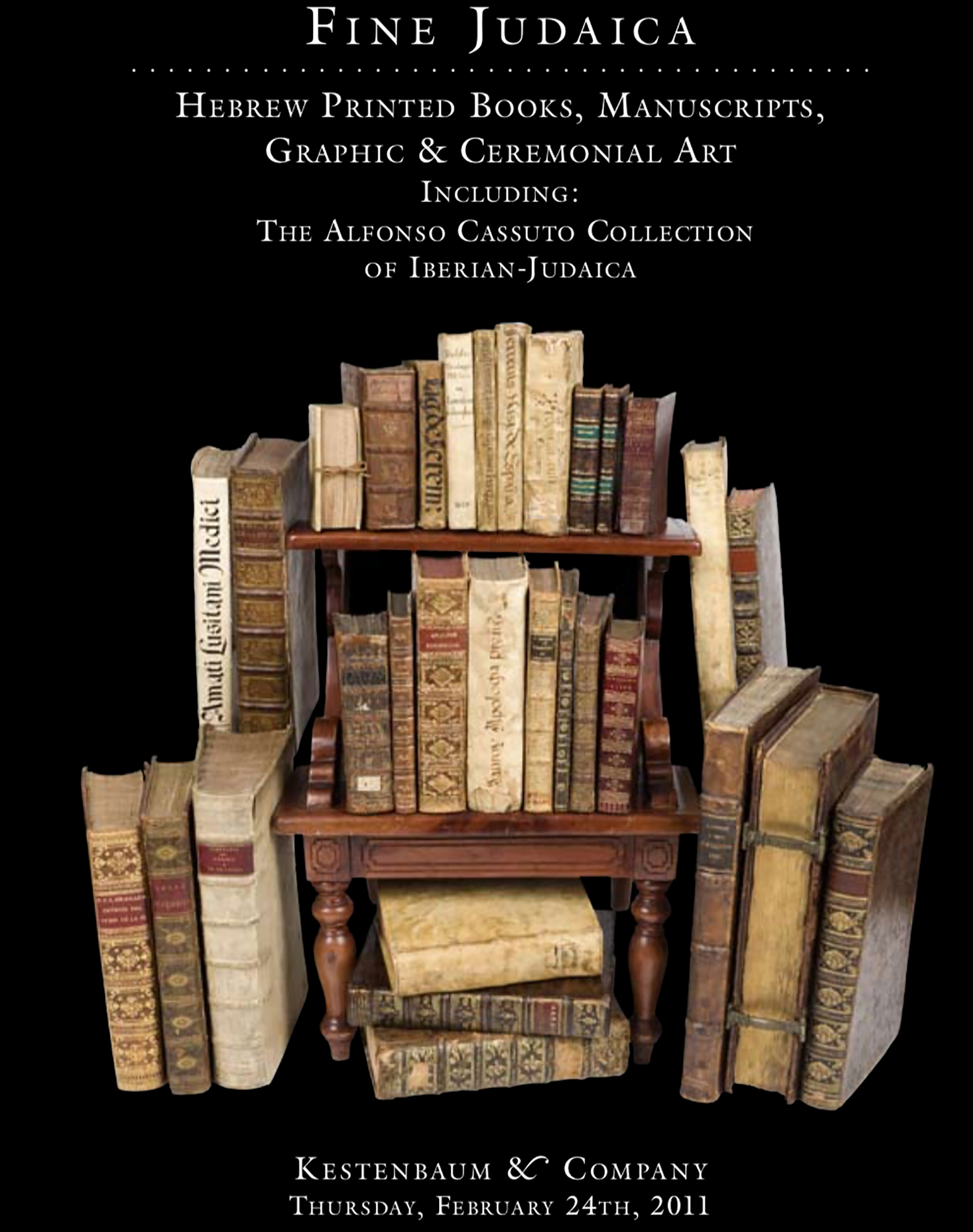EXCEPTIONAL ITALIAN EMROIDERED SYNAGOGUE TEXTILE. DATED 1698.

AUCTION 50 |
Thursday, February 24th,
2011 at 1:00
Fine Judaica: Hebrew Printed Books, Manuscripts, Graphic & Ceremonial Art Including: The Alfonso Cassuto Collection of Iberian Art
Lot 397
EXCEPTIONAL ITALIAN EMROIDERED SYNAGOGUE TEXTILE. DATED 1698.
Est: $5,000 - $7,000
PRICE REALIZED $7,000
The synagogues of Italy lay claim to a variety of embroidered textiles whose styles and techniques are linked to their respective place of production. Indeed the family Tolentino noted in the present example, presumably stems from the town of the same name, located in the province of Macerata in the Marche region of Central Italy.
From the Middle Ages fine embroidery was a vital part of a Jewish woman’s upbringing as apparent from textiles utilized for both domestic and religious purposes. Often, women sought recognition of their handiwork which may be revealed in an inscription along the textile itself, such as the one in the present example.
Unlike Torah binders of German origin (wimpels), Italian binders were not connected with the Brit Milah or Bar Mitzvah ceremonies. Skillfully embroidered with sophisticated color palettes and designs, Italian mapot included dedicatory formulas and individual prayers by the women who fashioned them. Cecil Roth notes: "From (Renaissance) synagogue architecture we know that Italian women were segregated in a special gallery and according to Jewish Law could not participate fully in the worship service. But the work of their hands, their Hebrew names, their prayers and hopes, were placed on the small strip of cloth which physically touched the most holy object in the synagogue, the Torah scroll.” Journal of Jewish Art, Vol. VII p. 43. See also, Jewish Museum Catalogue, Gardens and Ghettos, The Art of Jewish Life in Italy (1989) p. 124 and Sothebys, Judaica, December, 2007, lot 209.
The Present Dated Example is of an Extraordinary Early Vintage.
